Bust of a high-ranking official of the Empire wearing a cuirass and draped in a paludamentum
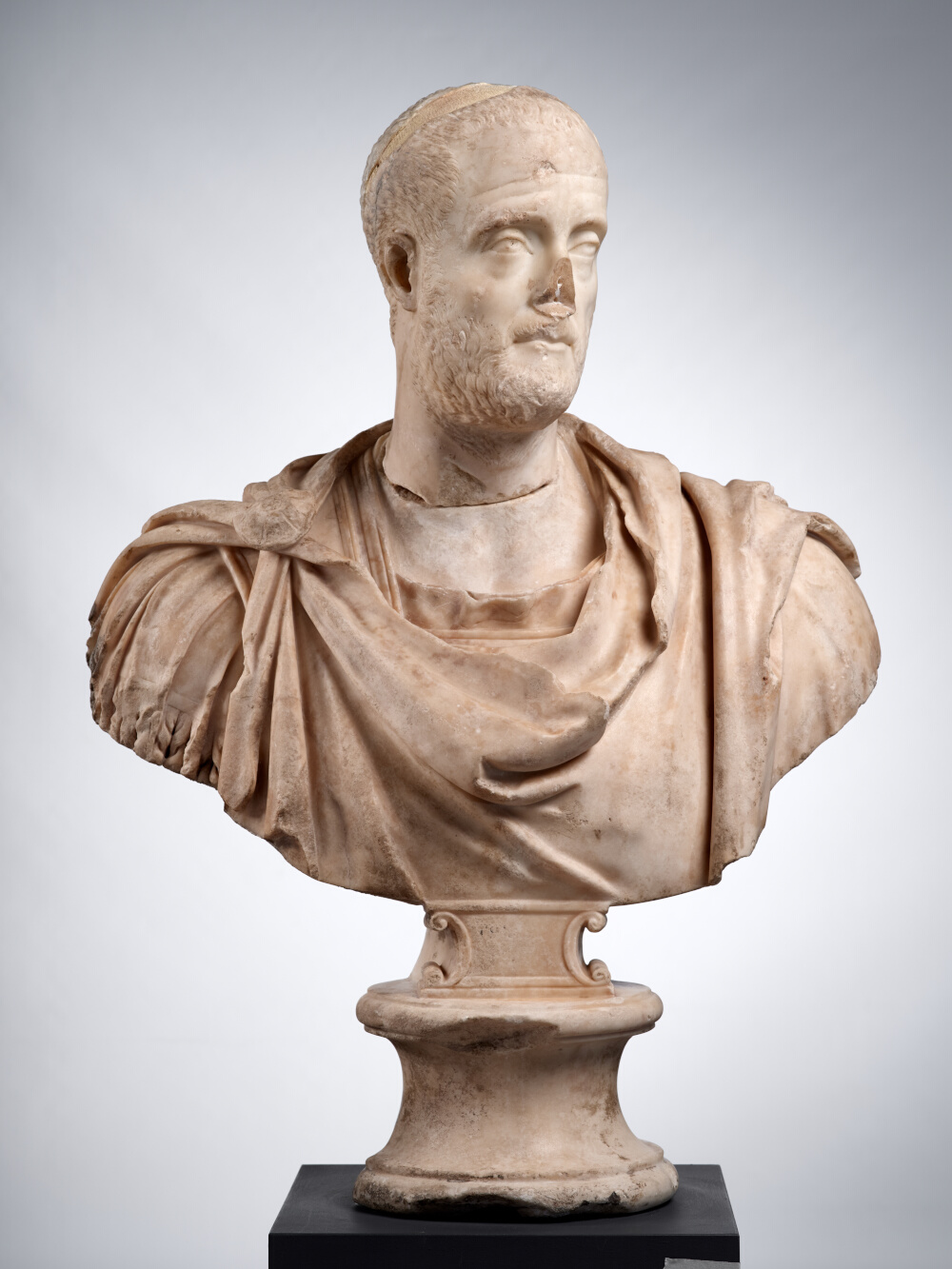
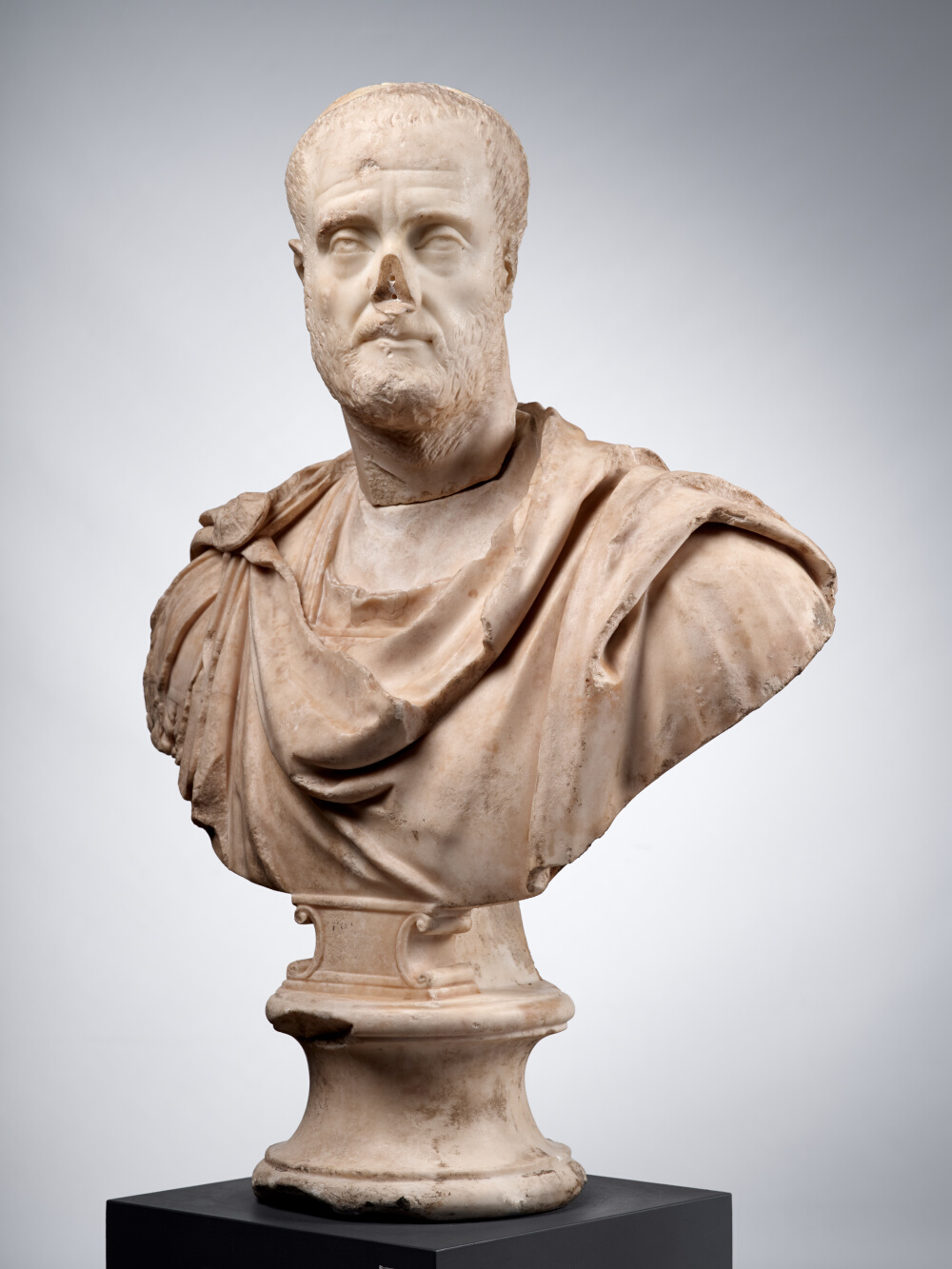
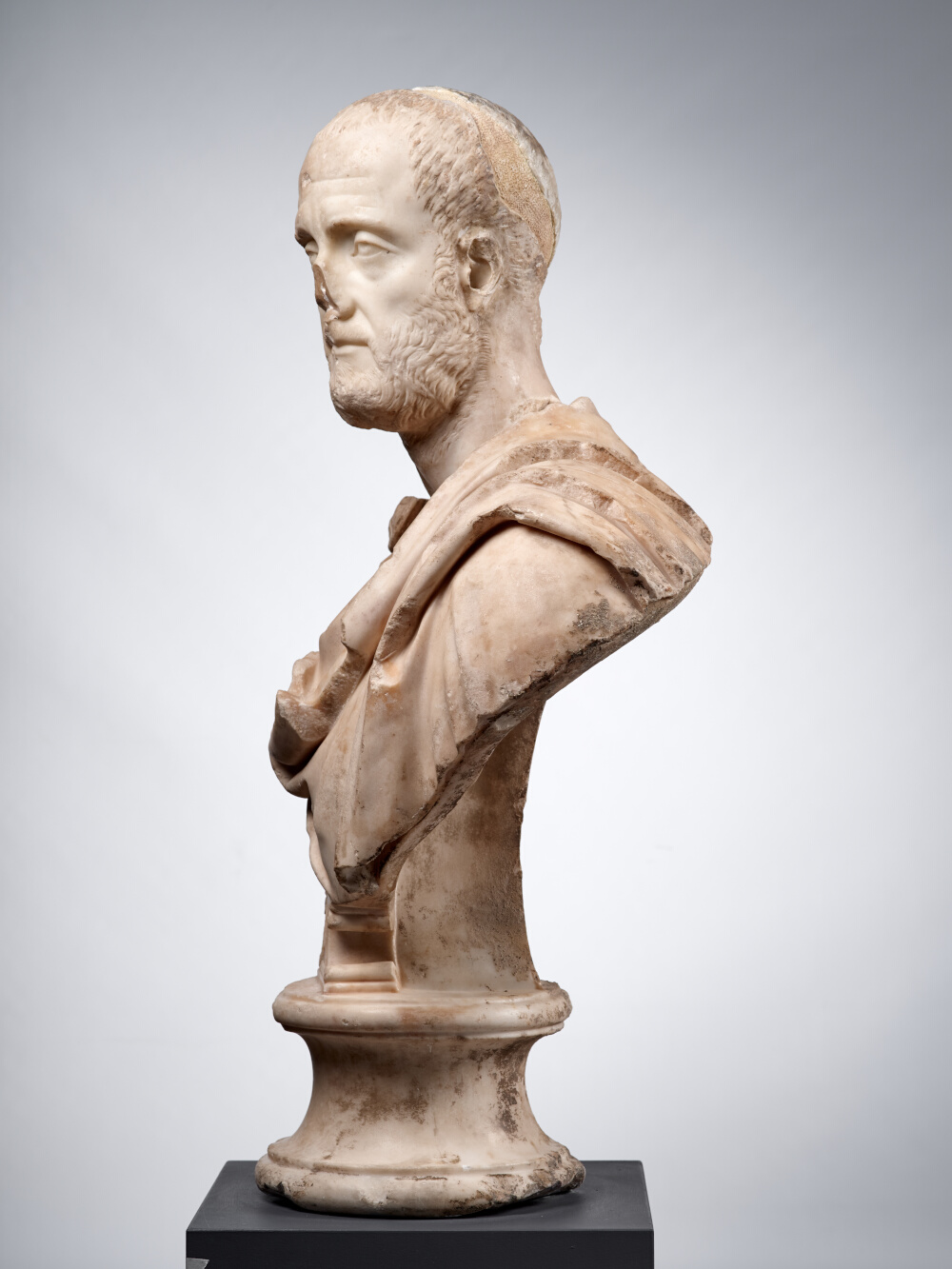
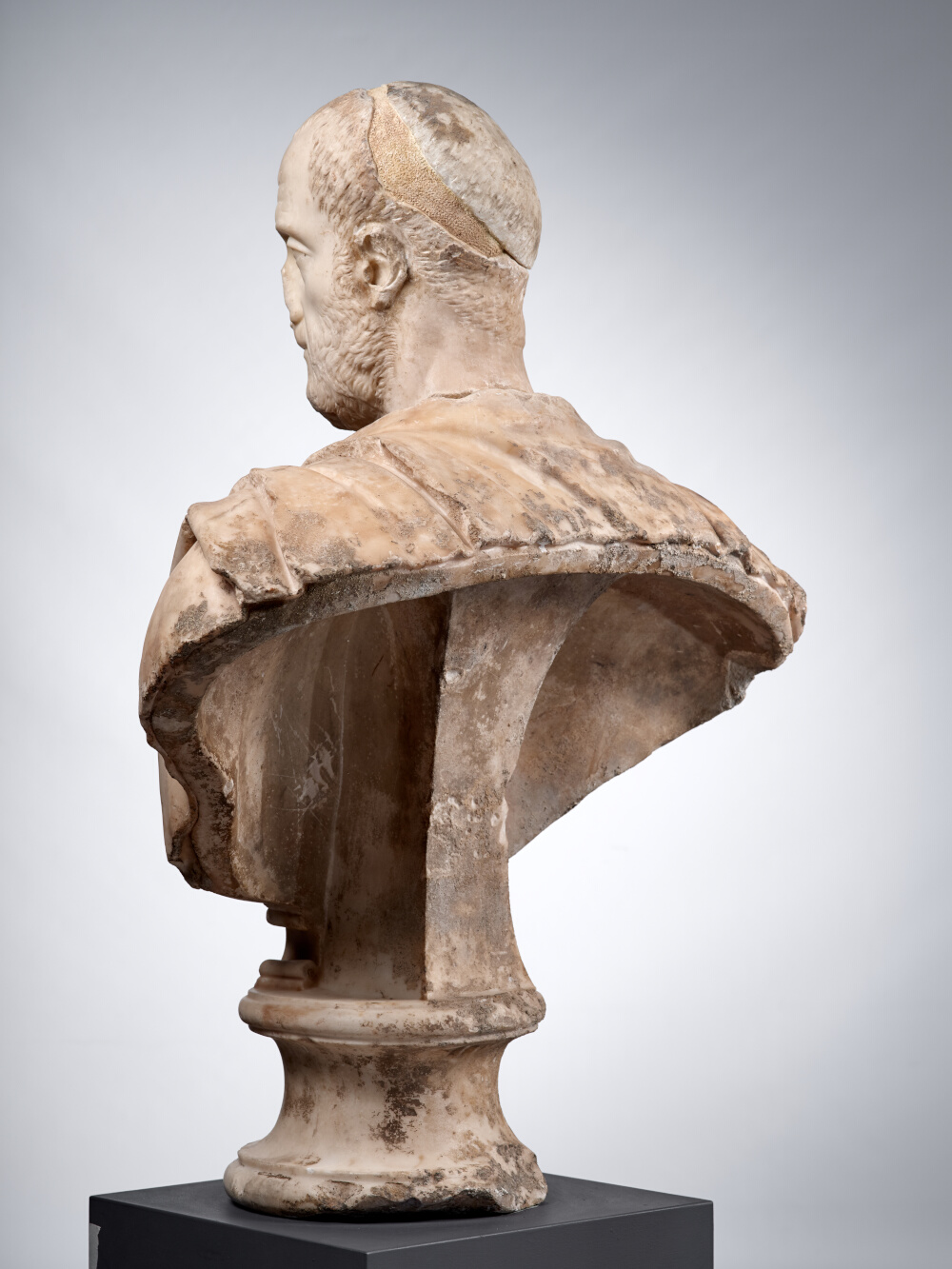
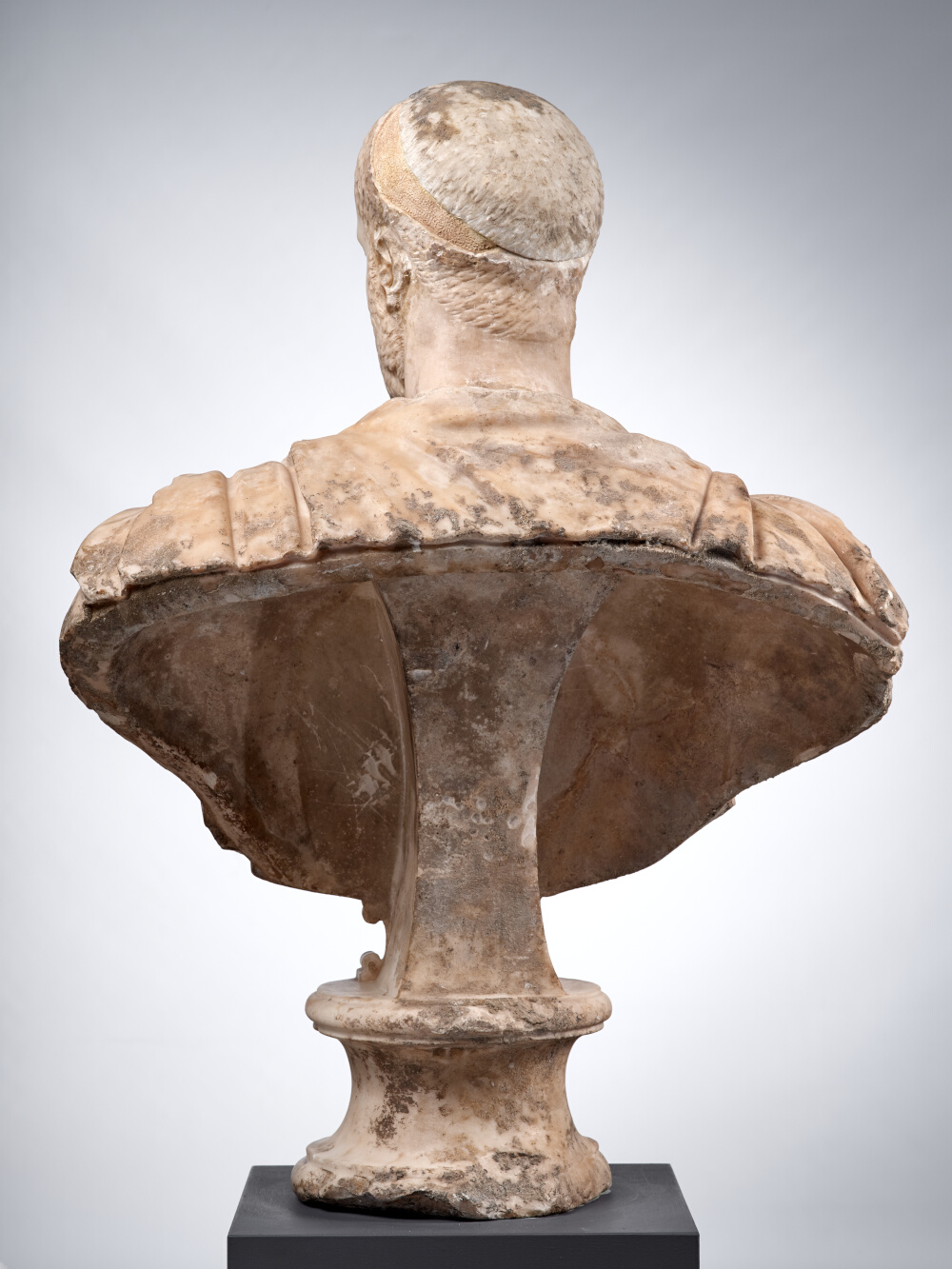
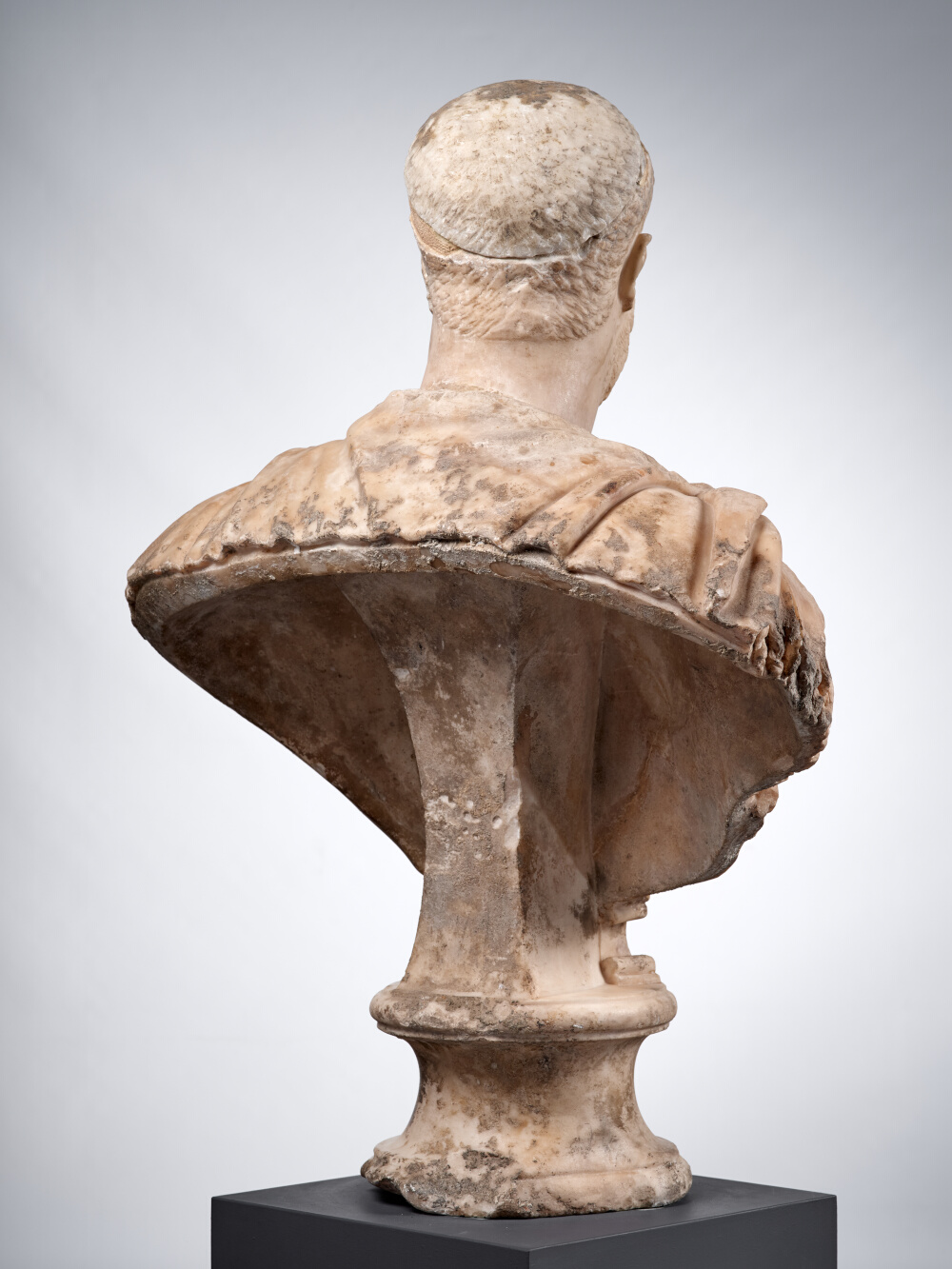
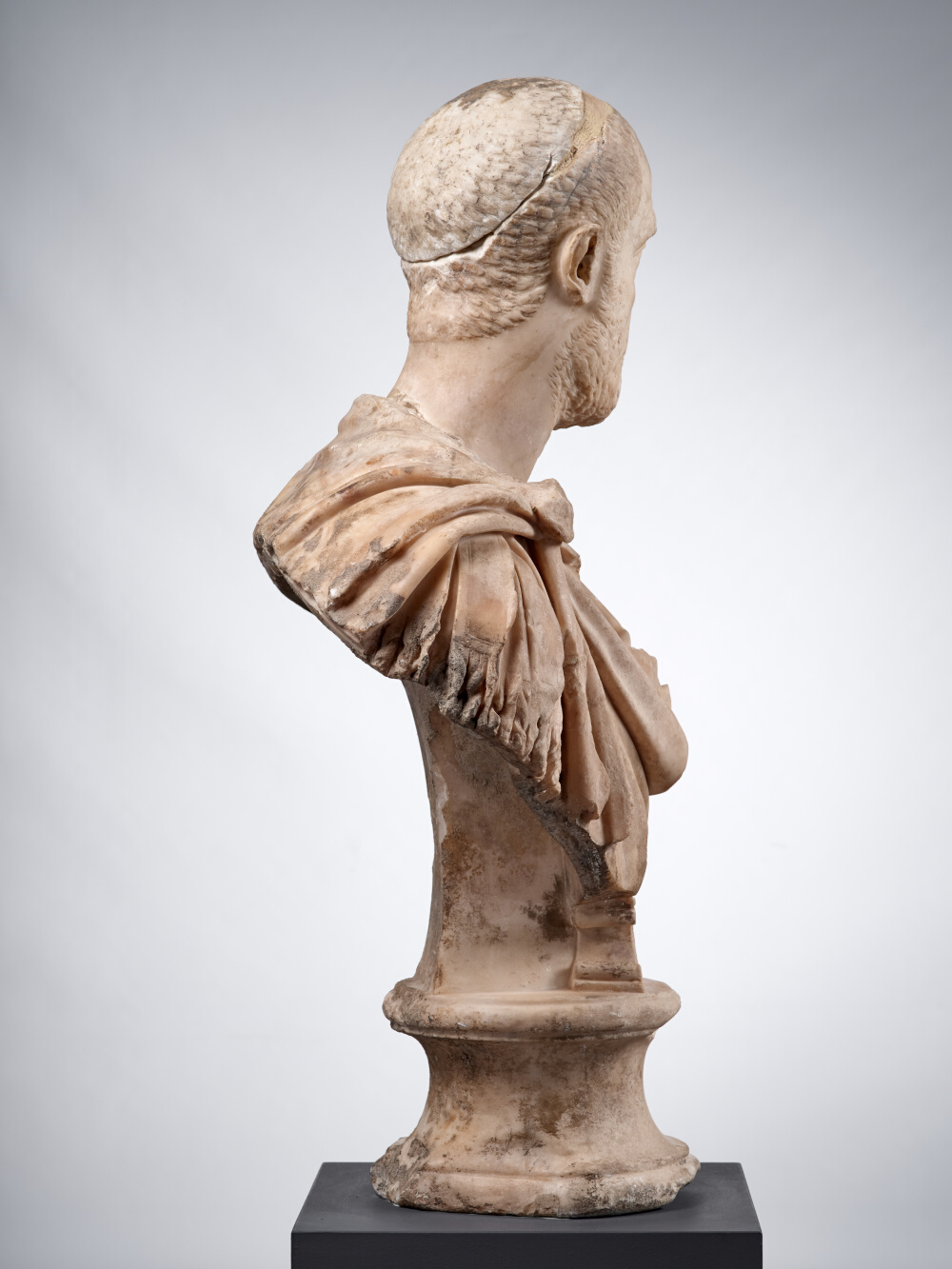
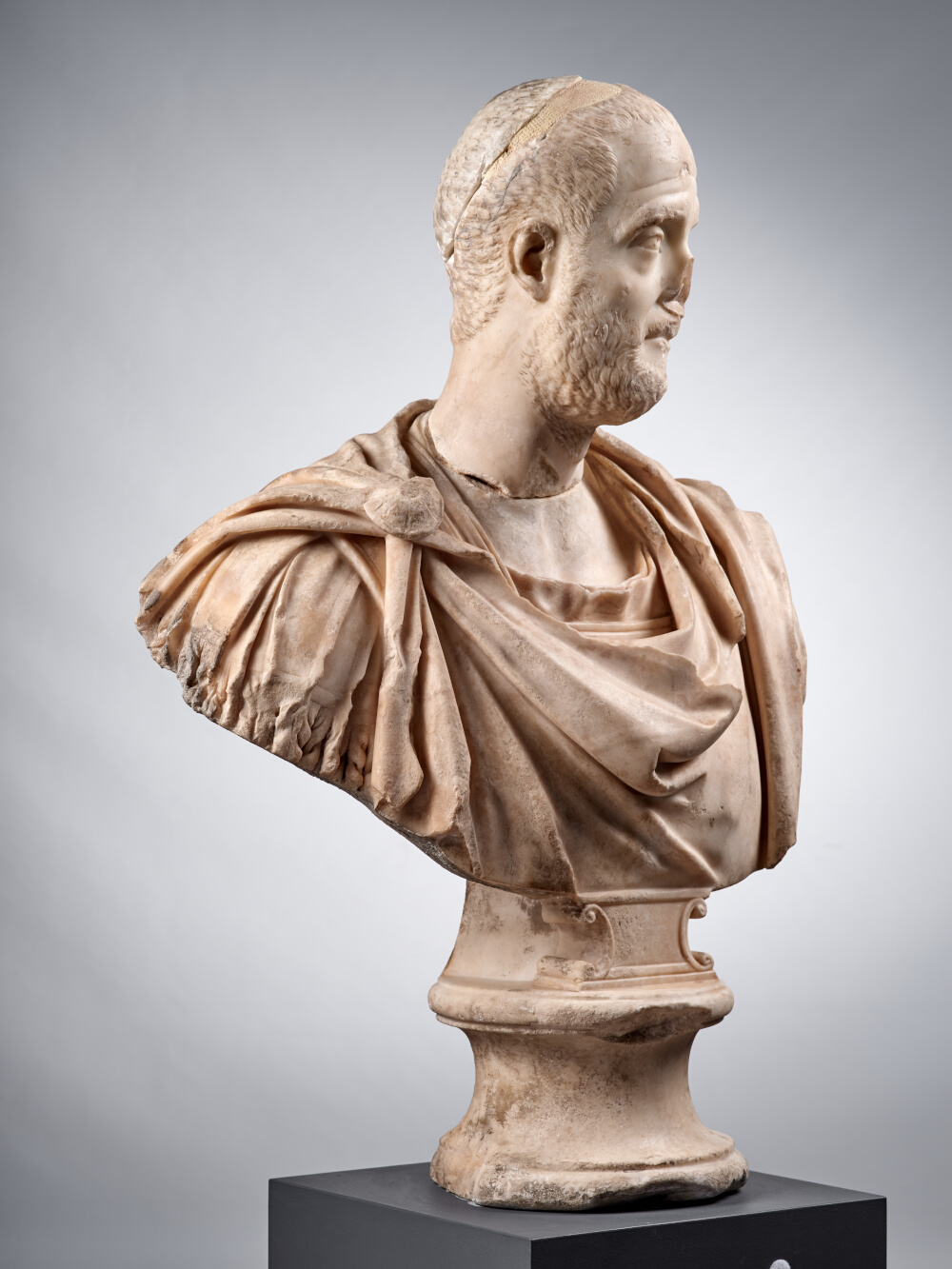
- Date de création
- 220 - 235
- Material
- Göktepe marble, district 3 (Turkey)
- Dimensions
- H. 80 x l. 67 x P. 38 (cm)
- Inventory number
- Ra 71
- Photo credits
- Daniel Martin
While the « a penne » technique (meaning in the form of small feathers) used to depict strands of hair appeared as early as the year 215 on some statue portraits of Caracalla, it continued, depending on the workshop, until the reign of Decius (249-251). When dealing with anonymous works, it is therefore necessary to opt for a relatively wide timeframe that allows for different workshop practices.
Because the bust kept in Toulouse is a true double of 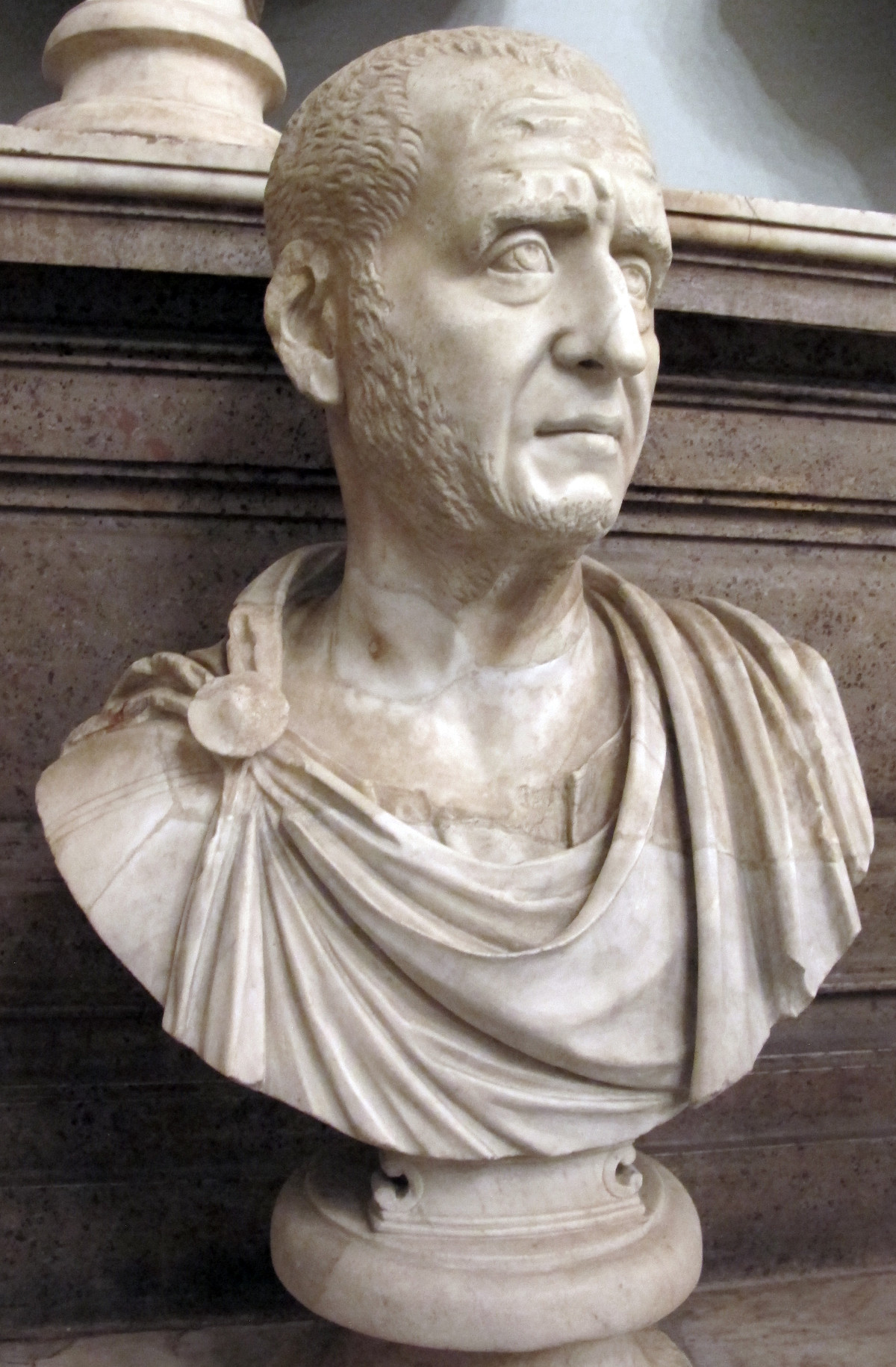 Decius, one cannot help but wonder if it is a portrait of the emperor a few years before the proclamation by the troops of Pannonia in 249. Yet we must refrain from hasty identification and simply note, once again, that this is the image of one of the officials from the emperor’s immediate entourage, which is hardly surprising, given Chiragan’s context.
Decius, one cannot help but wonder if it is a portrait of the emperor a few years before the proclamation by the troops of Pannonia in 249. Yet we must refrain from hasty identification and simply note, once again, that this is the image of one of the officials from the emperor’s immediate entourage, which is hardly surprising, given Chiragan’s context.
The head and bust were joined together in the restoration that immediately followed their discovery, but they do not belong together. This is a modern reassembly carried out by the sculptors in Toulouse to enable these works to be displayed in the « Emperors’ Gallery » exhibition in 1835. The bust dates back to the Antonine dynasty; that is the century that precedes this type of portrait, as can be seen from the already quite distinctly marked top of the arms, the width of the shoulders, and the oval shape that is found on several representations of Antoninus Pius. In addition to this modern reconstruction, the head itself bears the trace of important remodelling work, which could mean it was actually re-sculpted during Antiquity. The pavilion of the left ear seems to have been substantially reworked from a portrait that apparently had larger ears partly covered by curls of hair; at the back of the left ear, as on the right side, the surrounding coarsely pockmarked area differs markedly from the careful work of the penne that constitute the rest of the hairstyle. Finally, the thickness of the neck in relation to the narrow head could also be explained by the systematic reshaping of an earlier portrait.
Yet the quality of this portrait is quite outstanding: the subtle modelling of the face, the intensity of the gaze, the care taken in detailing the hair, and the locks of the beard are all proof of the skills of the artisans working for workshops of the Urbs (Rome) when it came to producing this type of work.
According to J.-C. Balty 2020, Les Portraits Romains : L’époque des Sévères, Toulouse, p. 245-252.
Bibliography
- Balty, Cazes 2021 J.-C. Balty, D. Cazes, Les portraits romains, 1 : L’époque des Sévères, 1.3 (Sculptures antiques de Chiragan (Martres-Tolosane), Toulouse. p. 39-41, 245-252
- Cazes et al. 1999 D. Cazes, E. Ugaglia, V. Geneviève, L. Mouysset, J.-C. Arramond, Q. Cazes, Le Musée Saint-Raymond : musée des Antiques de Toulouse, Toulouse-Paris. p. 140
- Du Mège 1835 A. Du Mège, Description du musée des Antiques de Toulouse, Toulouse. no 223
- Du Mège 1828 A. Du Mège, Notice des monumens antiques et des objets de sculpture moderne conservés dans le musée de Toulouse, Toulouse. no 137
- Espérandieu 1908 É. Espérandieu, Recueil général des bas-reliefs de la Gaule romaine, 2. Aquitaine, Paris. no 977
- Joulin 1901 L. Joulin, Les établissements gallo-romains de la plaine de Martres-Tolosane, Paris. no 327
- Mesplé 1948 P. Mesplé, « Raccords de marbres antiques, » La Revue des Musées de France, July. p. 157
- Rachou 1912 H. Rachou, Catalogue des collections de sculpture et d’épigraphie du musée de Toulouse, Toulouse. no 71
- Roschach 1892 E. Roschach, Catalogue des musées archéologiques de la ville de Toulouse : Musée des Augustins, Musée Saint-Raymond, Toulouse. no 137
To cite this notice
Capus P., "Bust of a high-ranking official of the Empire wearing a cuirass and draped in a paludamentum", in The sculptures of the roman villa of Chiragan, Toulouse, 2019, online <https://villachiragan.saintraymond.toulouse.fr/en/ark:/87276/a_ra_71>.